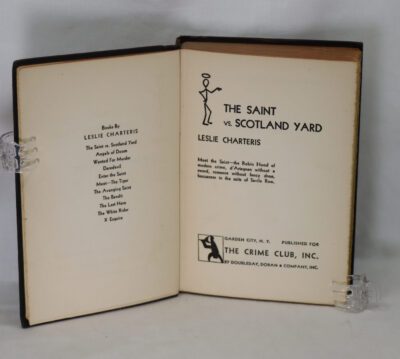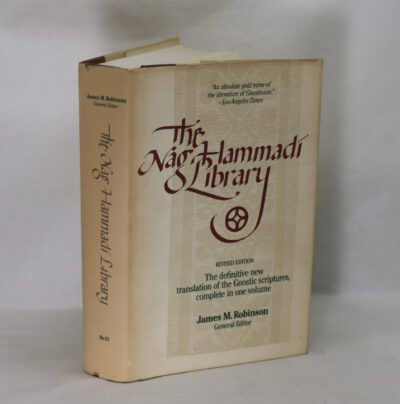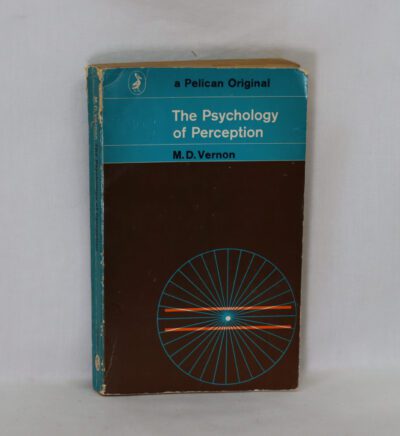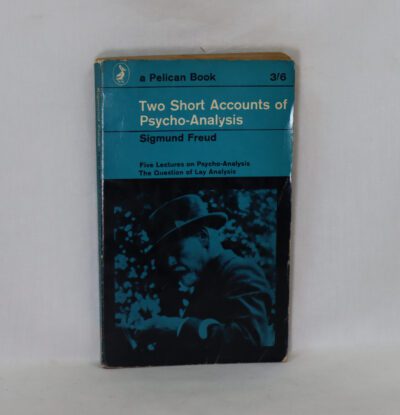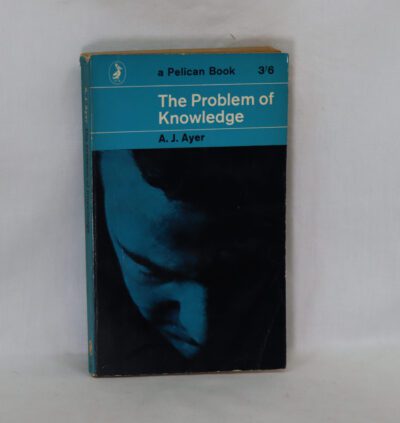Fammrliche Werte. Wille und Borftellung.
By Arthur Schopenhauer
Printed: 1891
Publisher: F H Brohaus. Leipzig
| Dimensions | 15 × 22 × 4 cm |
|---|---|
| Language |
Language: German
Size (cminches): 15 x 22 x 4
Condition: Fine (See explanation of ratings)
Your items
Item information
Description
Brown calf spine with gilt banding and title. Brown marbled boards. dimensions are for one volume.
- We provide an in-depth photographic presentation of this item to stimulate your feeling and touch. More traditional book descriptions are immediately available.
- Note: This book carries a £5.00 discount to those that subscribe to the F.B.A. mailing list.
2 quality volumes of this prestigious work. Binding and contents are in good order.
The World as Will and Representation (WWR; Die Welt als Wille und Vorstellung, WWV), sometimes translated as The World as Will and Idea, is the central work of the German philosopher Arthur Schopenhauer. The first edition was published in late 1818, with the date 1819 on the title page. A second, two-volume edition appeared in 1844: volume one was an edited version of the 1818 edition, while volume two consisted of commentary on the ideas expounded in volume one. A third expanded edition was published in 1859, the year before Schopenhauer’s death. In 1948, an abridged version was edited by Thomas Mann.
In the summer of 1813, Schopenhauer submitted his doctoral dissertation—On the Fourfold Root of the Principle of Sufficient Reason—and was awarded a doctorate from the University of Jena. After spending the following winter in Weimar, he lived in Dresden and published his treatise On Vision and Colours in 1816. Schopenhauer spent the next several years working on his chief work, The World as Will and Representation. Schopenhauer asserted that the work is meant to convey a “single thought” from various perspectives. He develops his philosophy over four books covering epistemology, ontology, aesthetics, and ethics. Following these books is an appendix containing Schopenhauer’s detailed Criticism of the Kantian Philosophy.
Taking the transcendental idealism of Immanuel Kant as his starting point, Schopenhauer argues that the world humans experience around them—the world of objects in space and time and related in causal ways—exists solely as “representation” (Vorstellung) dependent on a cognizing subject, not as a world that can be considered to exist in itself (i.e., independently of how it appears to the subject’s mind). One’s knowledge of objects is thus knowledge of mere phenomena rather than things in themselves. Schopenhauer identifies the thing-in-itself — the inner essence of everything — as will: a blind, unconscious, aimless striving devoid of knowledge, outside of space and time, and free of all multiplicity. The world as representation is, therefore, the “objectification” of the will. Aesthetic experiences release one briefly from one’s endless servitude to the will, which is the root of suffering. True redemption from life, Schopenhauer asserts, can only result from the total ascetic negation of the “will to life”. Schopenhauer notes fundamental agreements between his philosophy, Platonism, and the philosophy of the ancient Indian Vedas.
The World as Will and Representation marked the pinnacle of Schopenhauer’s philosophical thought; he spent the rest of his life refining, clarifying and deepening the ideas presented in this work without any fundamental changes. The first edition was met with near-universal silence. The second edition of 1844 similarly failed to attract any interest. At the time, post-Kantian German academic philosophy was dominated by the German idealists—foremost among them G. W. F. Hegel, whom Schopenhauer bitterly denounced as a “charlatan”.
Arthur Schopenhauer (German: 22 February 1788 – 21 September 1860) was a German philosopher. He is known for his 1818 work The World as Will and Representation (expanded in 1844), which characterizes the phenomenal world as the manifestation of a blind and irrational noumenal will. Building on the transcendental idealism of Immanuel Kant (1724–1804), Schopenhauer developed an atheistic metaphysical and ethical system that rejected the contemporaneous ideas of German idealism.
Schopenhauer was among the first thinkers in Western philosophy to share and affirm significant tenets of Indian philosophy, such as asceticism, denial of the self, and the notion of the world-as-appearance. His work has been described as an exemplary manifestation of philosophical pessimism. Though his work failed to garner substantial attention during his lifetime, he had a posthumous impact across various disciplines, including philosophy, literature, and science. His writing on aesthetics, morality, and psychology have influenced many thinkers and artists.
Arthur Schopenhauer’s paternal grandfather, Andreas Schopenhauer [de] (1720–1793), was a wealthy merchant in Danzig. Arthur Schopenhauer’s paternal grandmother, Anna Renata Schopenhauer (1726–1793), was the daughter of a Dutch merchant and the Dutch ambassador to the Hanseatic city of Danzig Hendrik Soermans (1700–1775). Arthur Schopenhauer’s maternal grandfather, Christian Heinrich Trosiener [de] (1730–1797) was a merchant in Danzig and a councilor from the middle class. Arthur Schopenhauer’s maternal grandmother, Elizabeth Trosiener (1745–1818), was daughter of pharmacist Georg Lehmann (died 1762) and his wife Susanna Concordia Lehmann, née Neumann (born 1718). Arthur Schopenhauer’s paternal great-grandfather, Johann Schopenhauer [de] (1670–after 1724), was the mentioned merchant in Gdansk. Arthur Schopenhauer’s paternal great-grandfather through paternal grandmother, Hendrik Soermans [de] (1700–1775), was a Dutch merchant and Ambassador of the Netherlands in Gdansk. Arthur Schopenhauer’s paternal great-great grandfather, Johann Schopenhauer (1630–1701), was a farmer in Petershagen and son of Simon Schopenhauer (1580–1660) and grandson of Salomon Schopenhauer (born 1550).
Want to know more about this item?

Related products
Share this Page with a friend






